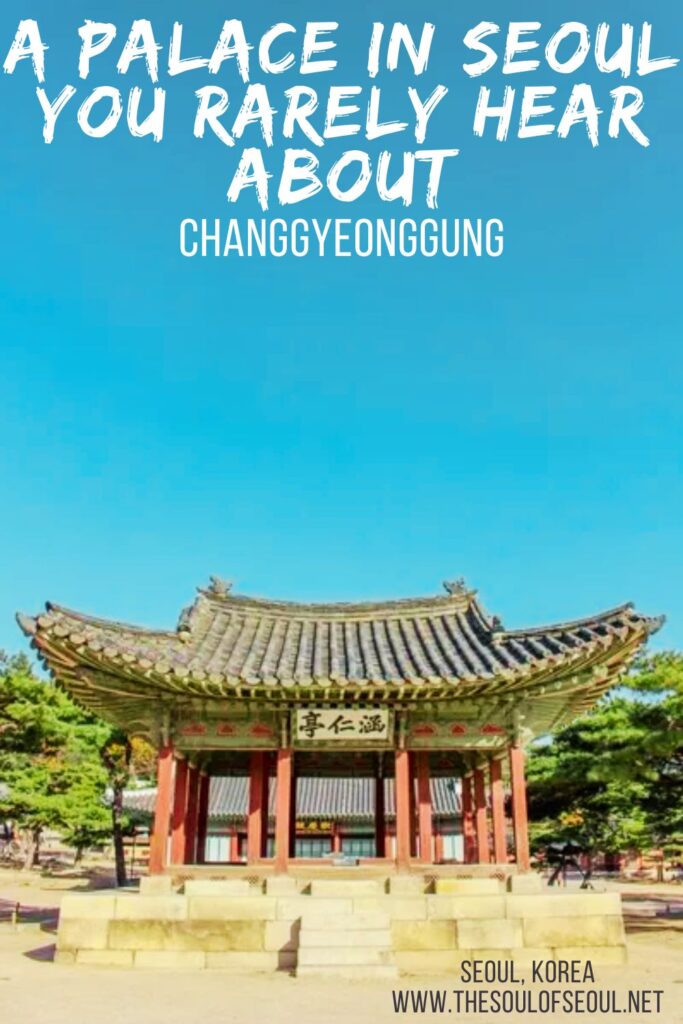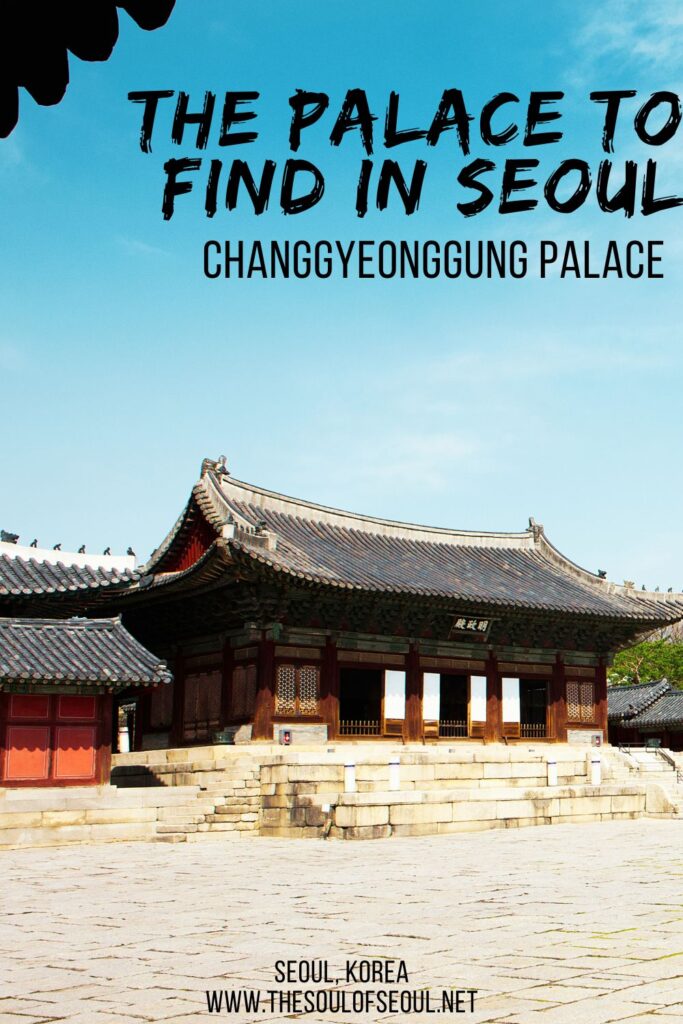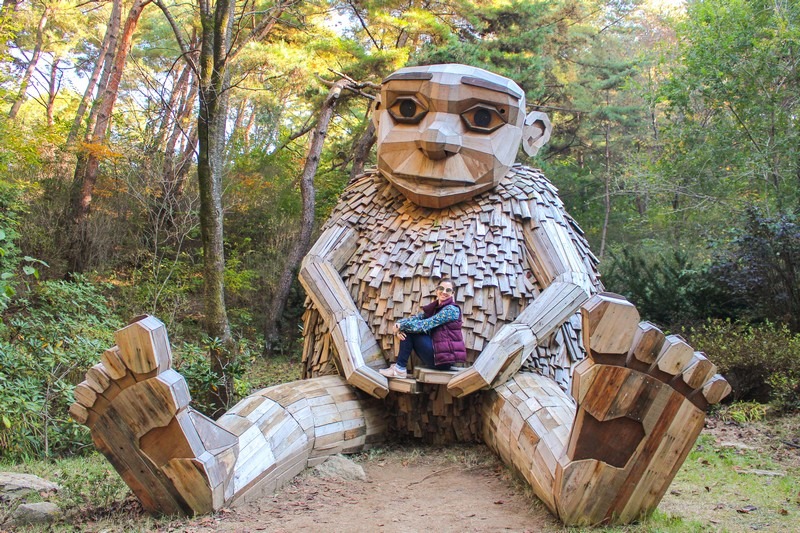Changgyeonggung: The Hidden Palace In Seoul
Last Updated on April 4, 2024
There are five palaces in Seoul and not all of them attract equal attention. This is good to know if you want to walk around a gorgeous Korean palace WITHOUT all of the crowds. As far as Korean palaces go, Gyeongbokgung Palace, the main palace in Seoul, and Changdeokgung featuring the Secret Garden always seem to top the lists but if you were to ask me, I’d say visiting Changgyeonggung (창경궁) is even better… for a number of reasons.
Different palaces for different feels I guess. I do love Gyeongbokgung from time to time and always take short term tourists there, but if I want to visit a palace and be almost assured there won’t be a ton of people to battle to see the wooden door frames and colorful window lattices, then Changgyeonggung is a very safe bet. BONUS: Changgyeonggung Palace also features a beautiful greenhouse that none of the other palaces possess.. but I’ll get to that in a bit.
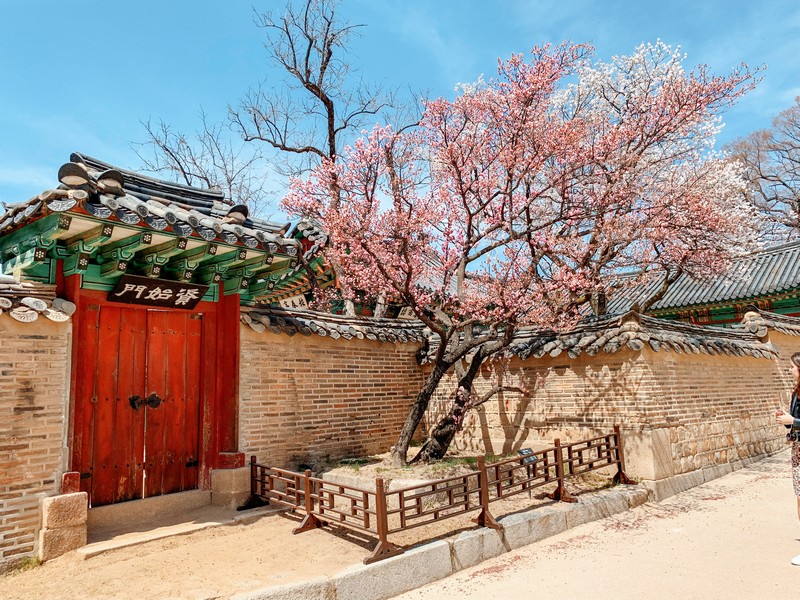
Plan a visit to the beautiful Changgyeonggung Palace with this guide:
(This post contains affiliate links, which means I receive a certain percentage of a sale if you purchase after clicking at no cost to you. Thank you for your support.)
How To Get There
Address: 185 Changgyeonggung-ro, Jongno-gu, Seoul (서울특별시 종로구 창경궁로 185 (와룡동)
How To Get To Changgyeonggung Palace: Get your TMoney card topped up to use public transportation in Korea. From Anguk Subway Station, exit 6. Walk straight to find bus stop #01200. You can take bus 272, 151, 171, or 172. Ride the bus just two stops (though it’s quite a walk) and you’ll get off across the street from Changgyeonggung Palace.
If you’ll be traveling via the Seoul City Hop On/Hop Off Bus, know that it also stops here. You can buy the ticket for this bus here. And to get more information about the bus, here is a guide to the Hop On/ Hop Off Bus In Seoul.
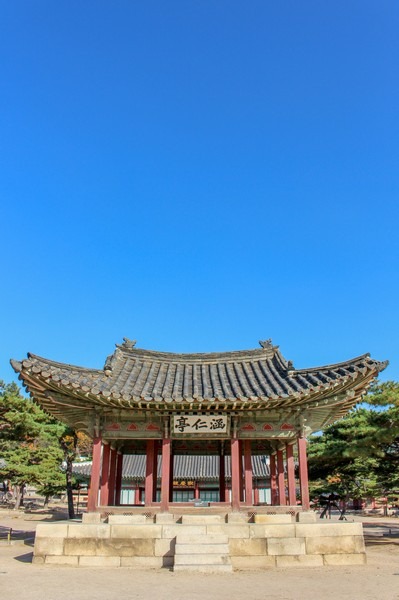
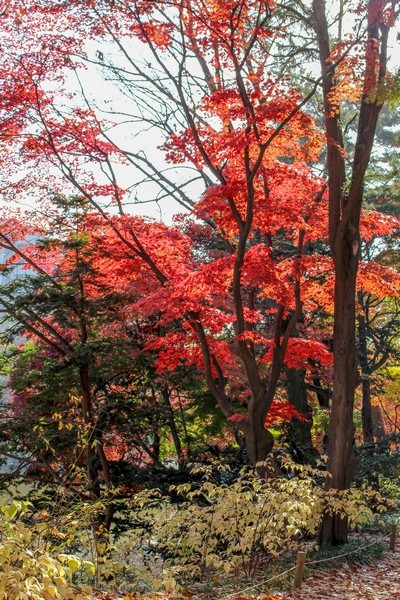
Basic Info
Closed: Every Monday
Hours: Feb-May, Sep-Oct 9:00am-6:00pm; Jun-Aug 9:00am-6:30pm; Nov-Jan 9:00am-5:30pm
Admission: Adults: W1,000
- Did you know you get free entrance to palaces in Seoul if you’re wearing a Hanbok? Might as well rent one to get beautiful pictures while you’re there. Don’t miss out! Check out this guide for renting a Hanbok in Seoul.
Tours: English: 11:00am, 4:00pm; Japanese: 10:00am, 2:00pm; Chinese: 09:30am, 3:00pm
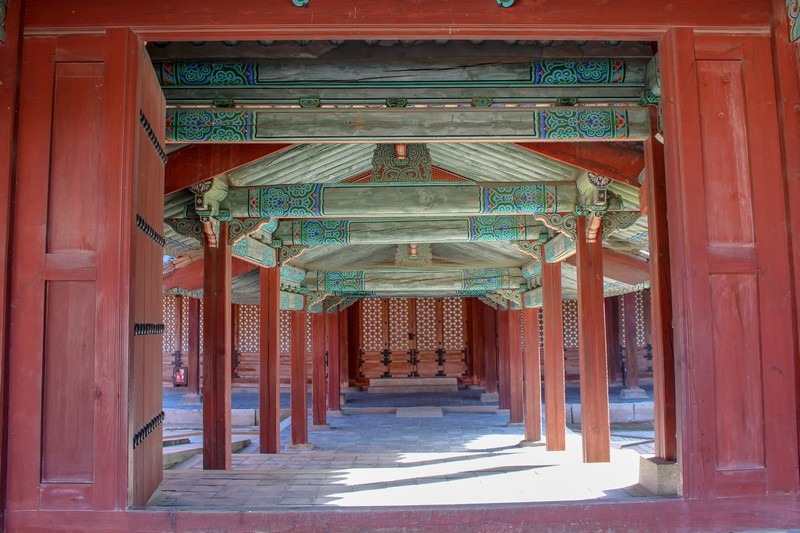
What To Know
Built during the Joseon Dynasty, it served as a more residential palace and was where the queen and concubines resided. Originally built in 1418, it served as the royal residence for King Sejong’s father, King Taejong.
There is a gorgeous pond and park on the palace grounds and during the Japanese colonization of the country, the palace was turned into a zoo and botanical garden. The demotion from a palace to a zoo was a bit scandalous but after much restoration and the zoo being relocated to Seoul Land in the 1980s, the palace and gardens are just beautiful today.
A little tidbit that’s good to know, the gardens of Changgyeonggung Palace or connected to the gardens of Changdeokgung Palace in the rear. You can enter through a small gate.
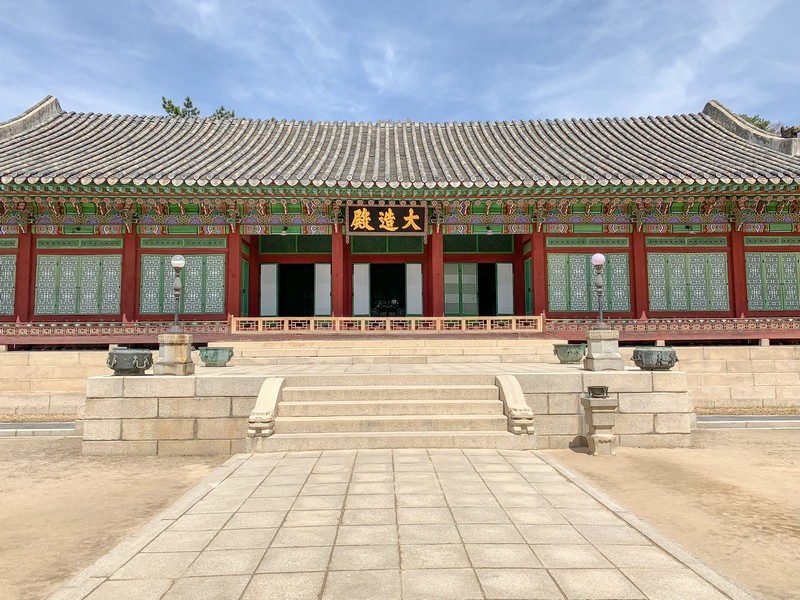
The palace comes with it’s own stories of intrigue for anyone interested. If you watched the 2015 film “The Throne” or “사도” which stars Song Kang-ho and Yoo Ah-in you may have some idea of what happened here.
The courtyard in front of Jungjeongjeon is where the sealing of Crown Prince Sado by King Yeongjo, his father, took place. Allegedly, Prince Sado was a mentally unstable man who killed unnecessarily and raped among other bad deeds. The royal family, worried about what would happen should Prince Sado, heir to the throne, become king, wanted to prevent his rise.
King Yeongjo, angry about his son’s deeds but law-abiding, ordered the crown prince to be sealed alive in a large rice chest in the courtyard without food or water. It was forbidden to make even a bruise on a royal’s body and this was his compromised punishment. After eight days in the box in the middle of July, Sado died. The crown prince’s death was actually kept secret and wasn’t revealed until 1776 after the death of Yeongjo.
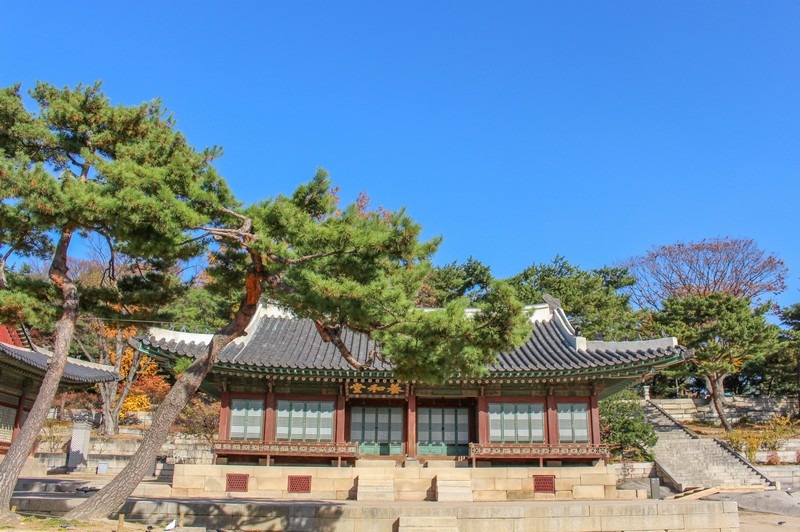
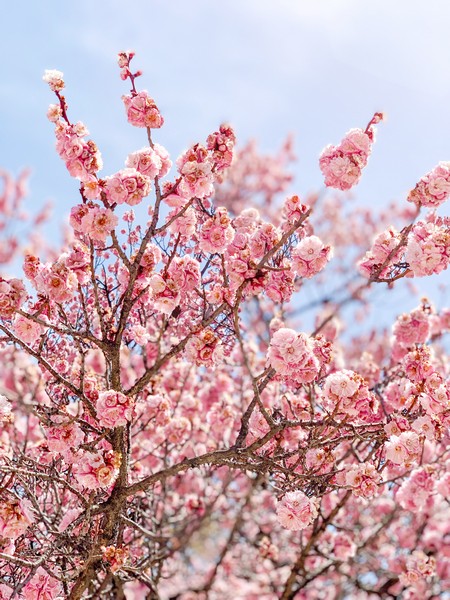
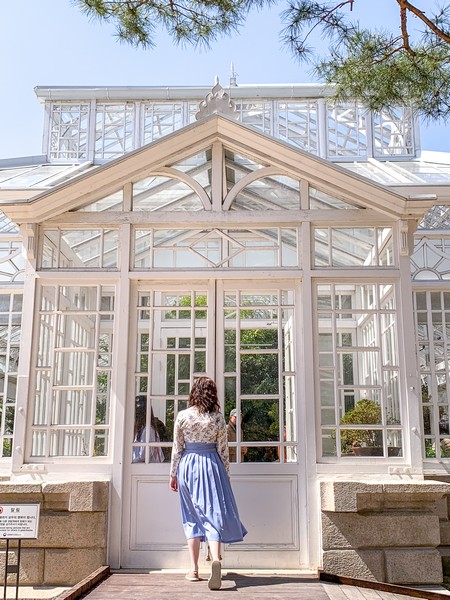
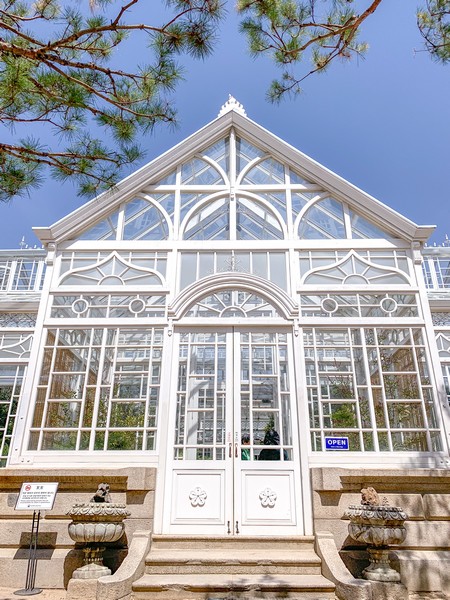
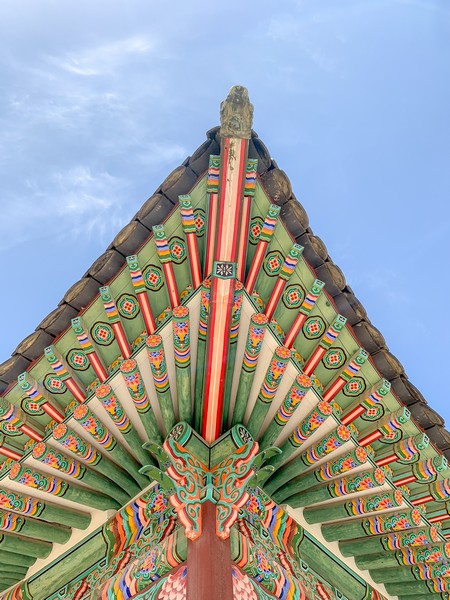
While the other palaces in the capital city were built to strictly abide by royal principles of design and featured a north-south orientation, this palace has a more liberal style. The palace was built in an east-west orientation which was more common during the Goryeo Dynasty.
After entering the main gate, visitors come to Myeongjeongjeon, the main throne hall which faces Mount Naksan, where the Ihwa Mural Village is located FYI, to the east while the other palaces have main structures which all face south.
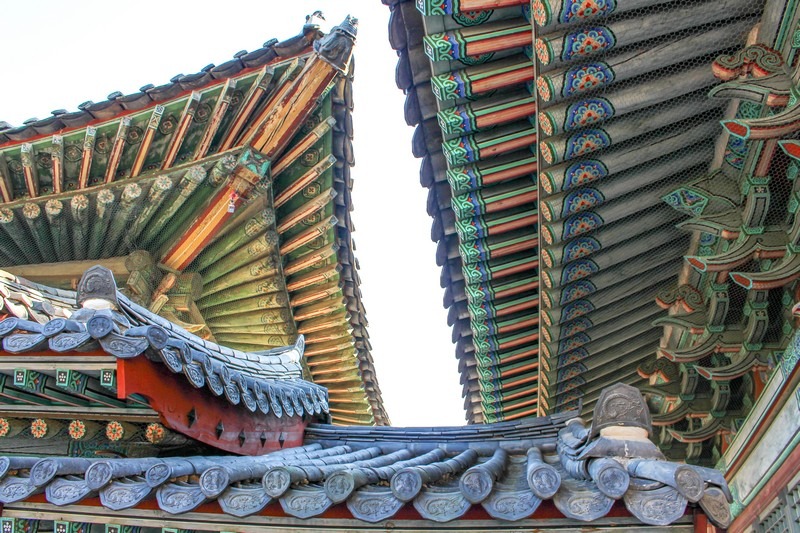
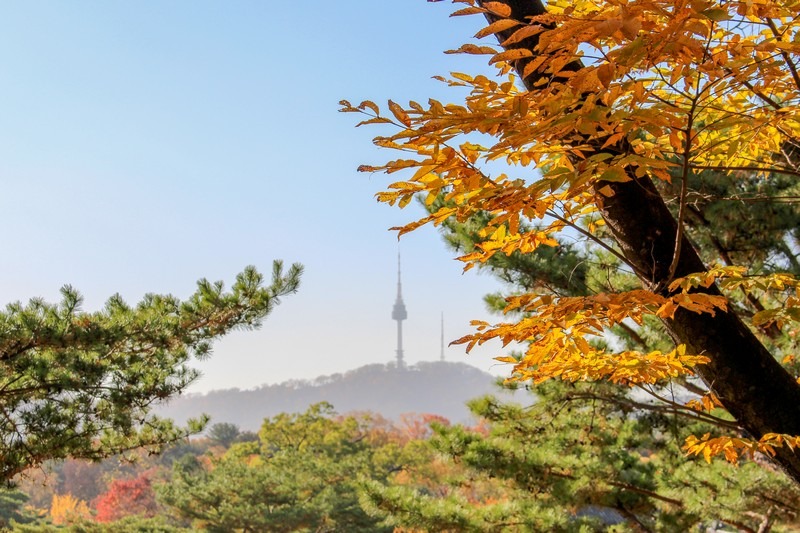
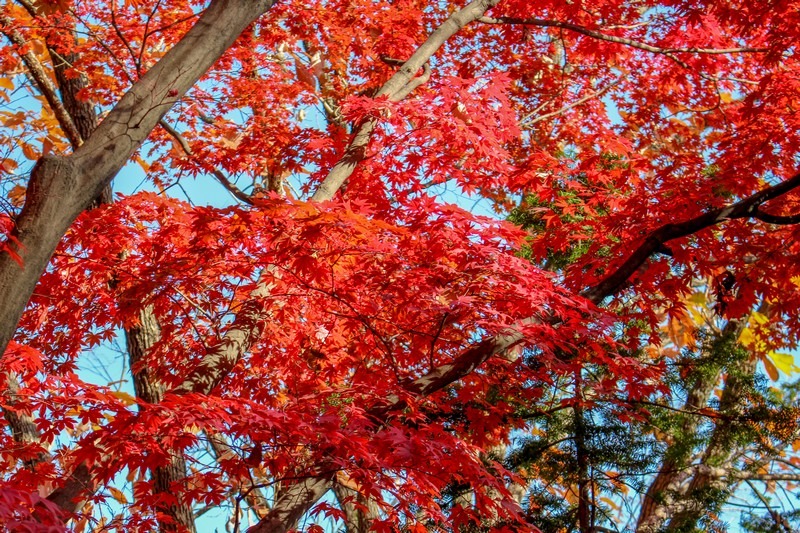
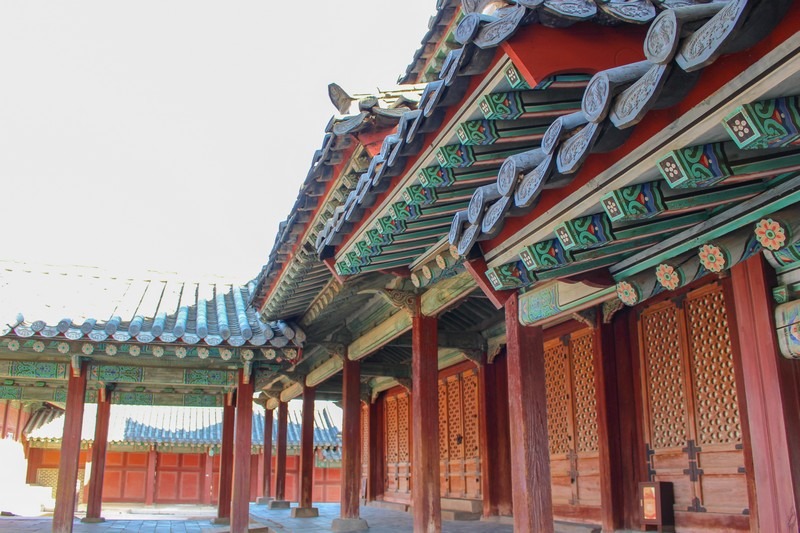
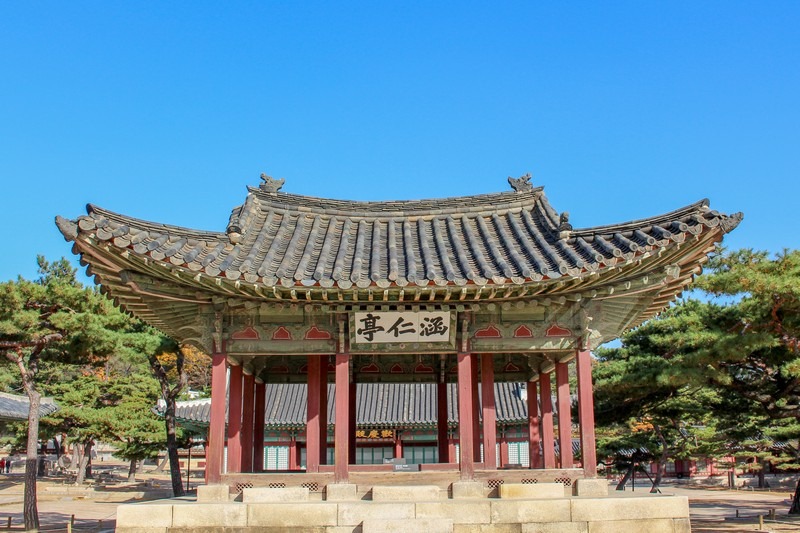
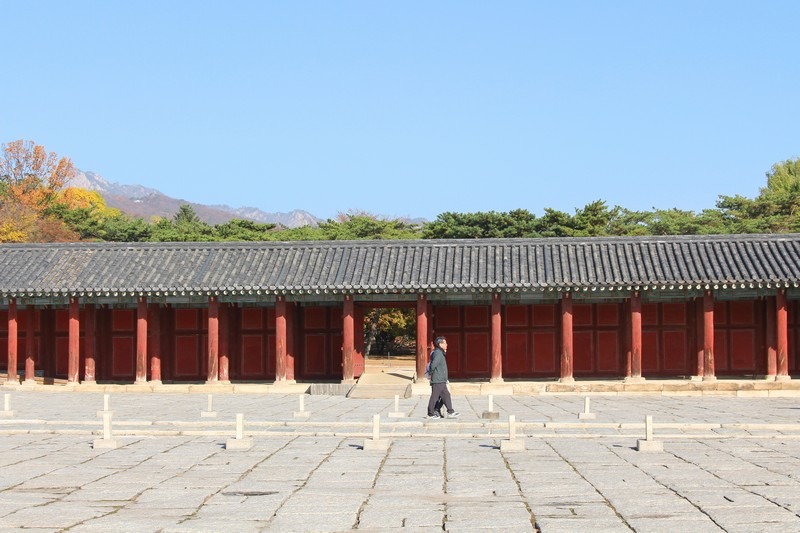
One of the only remnants from the days when the grounds held a zoo and botanical garden is Daeonshil, an indoor botanical garden at the northern end of the pond. After a 15 month restoration, the greenhouse was reopened to the public in November of 2017.
The Great Greenhouse was originally built in 1909 in a white Renaissance style and after circling the pond, the color really stands out against the green trees in the summer or the colorful hues of autumn. Though it’s called the Great Greenhouse, it is not as immense as you might expect but a very good size for when it was built. The structure itself is absolutely stunning and the restoration immaculate. PS If you’re in to greenhouses, check out the trending greenhouse cafes that are popping up around the city.
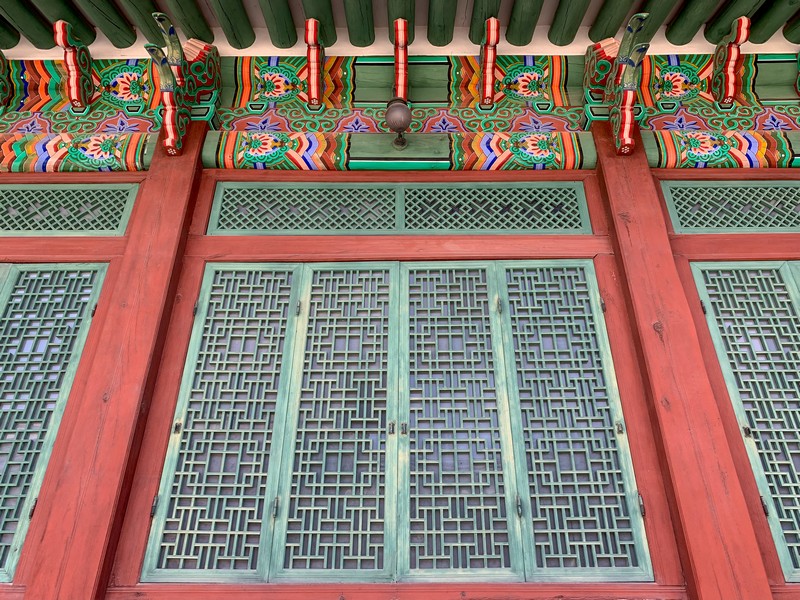
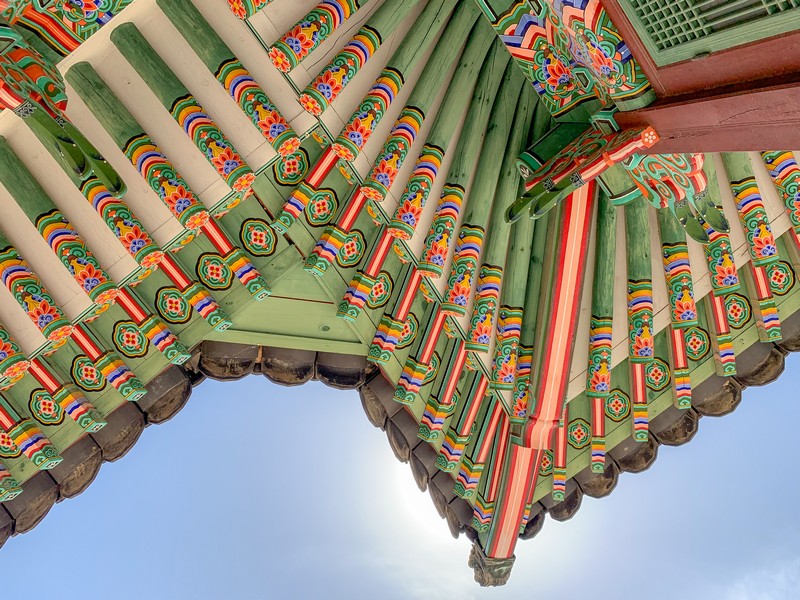
This is a great place to go if you want to see cherry blossoms in the spring or autumn foliage in a palace setting without the crowds. Gyeongbokgung Palace, the main palace in Seoul, definitely surpasses this palace in terms of size of not only the grounds but also the buildings on the grounds.
It also comes with a ton of crowds and the only way to maybe see the palace without the crowds is to get there right when it opens. Changdeokgung, the next popular palace has this beat because of the popularity of the Secret Garden that is said to be beautiful in every season for one reason or another. This palace is a bit more homely, the structures a bit smaller, but it has its own perks and stories to tell that is for sure.
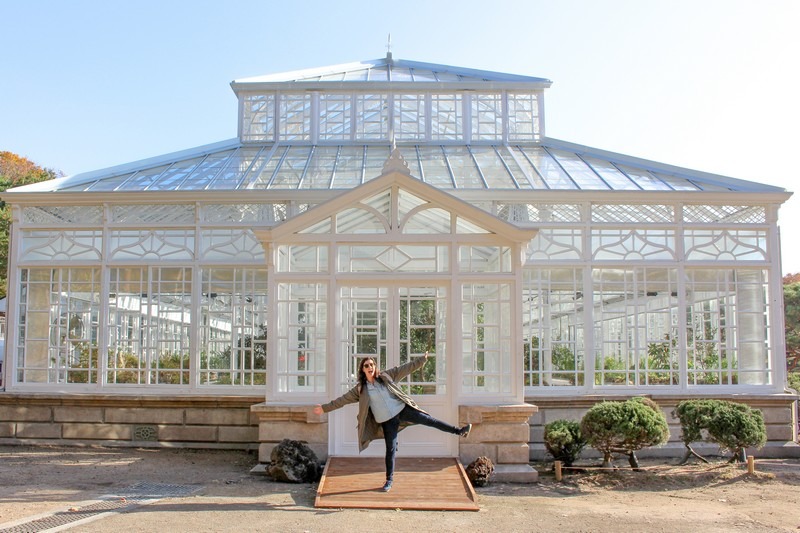
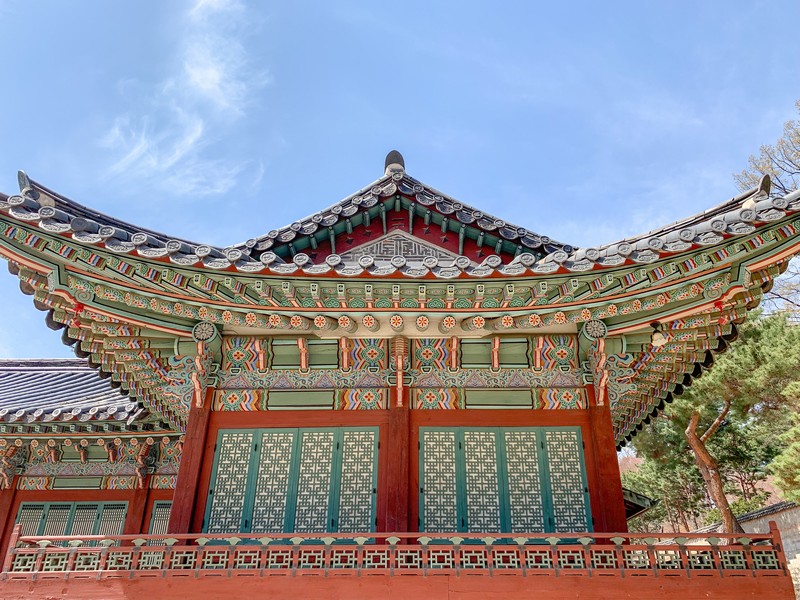
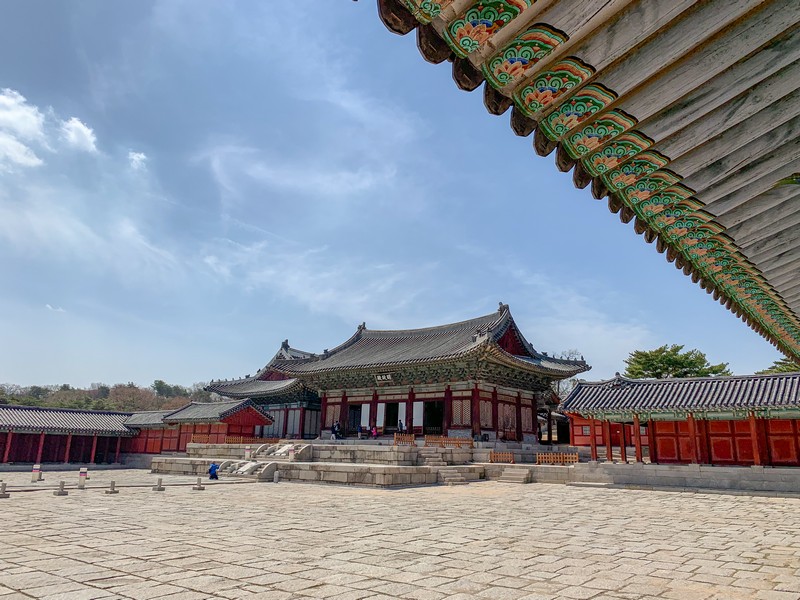
Another royal residence that is oft overlooked but is FREE and has really different vibes because the exterior of the buildings aren’t painted in colorful hues as the other palaces are is Unhyeonggung Palace. I think all of the palaces have their own unique advantages. Deoksugung Palace for example is the smallest but features buildings of various architectural styles so it’s very different from the others.
If there’s only a little time, go to the more popular ones. They’re popular for a reason, but if you want something different and maybe featuring an ornate greenhouse, this is the palace to find.
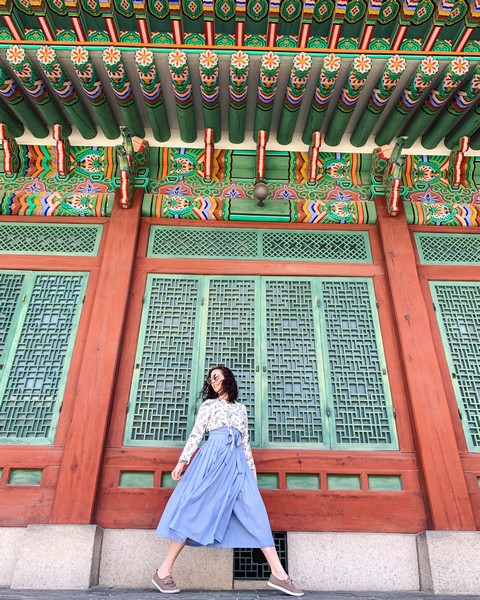
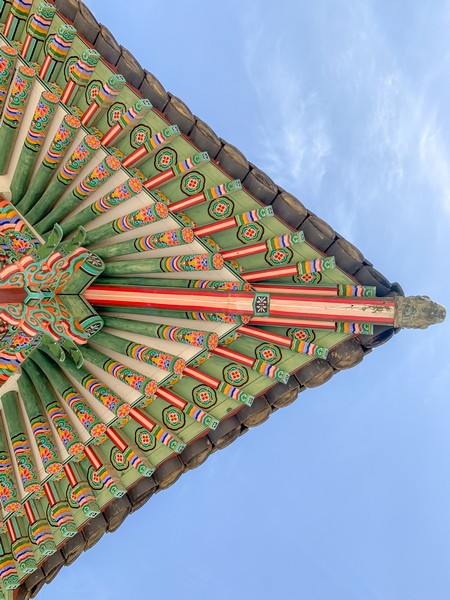
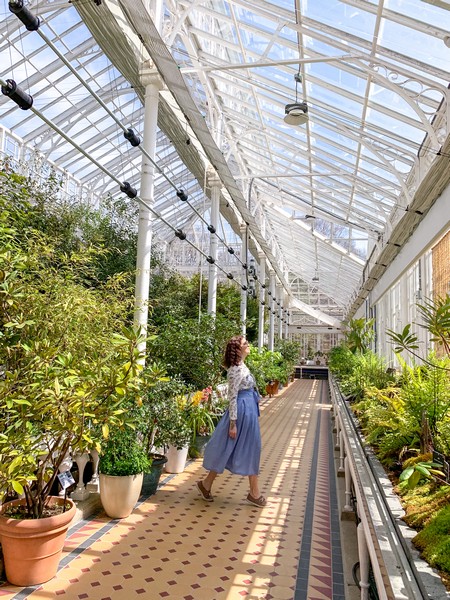
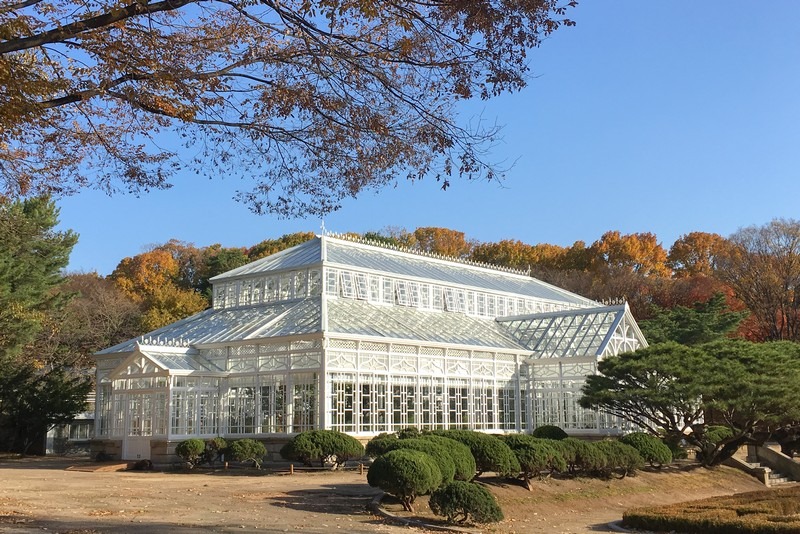
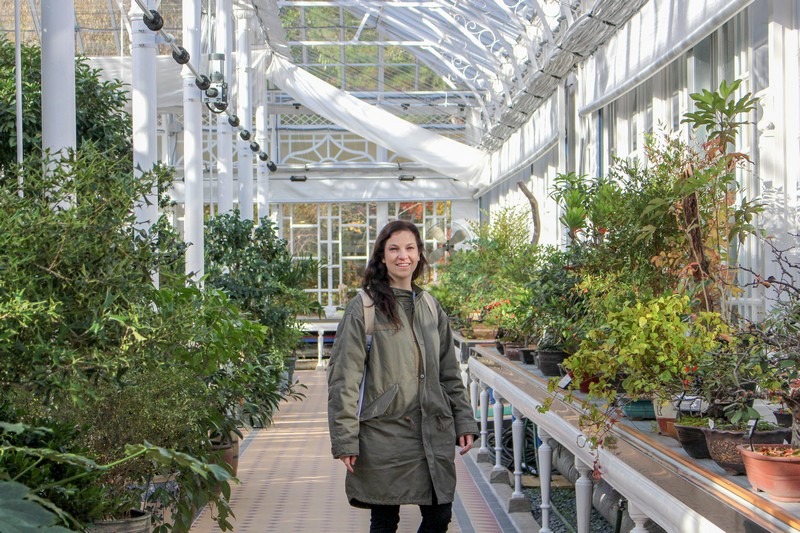
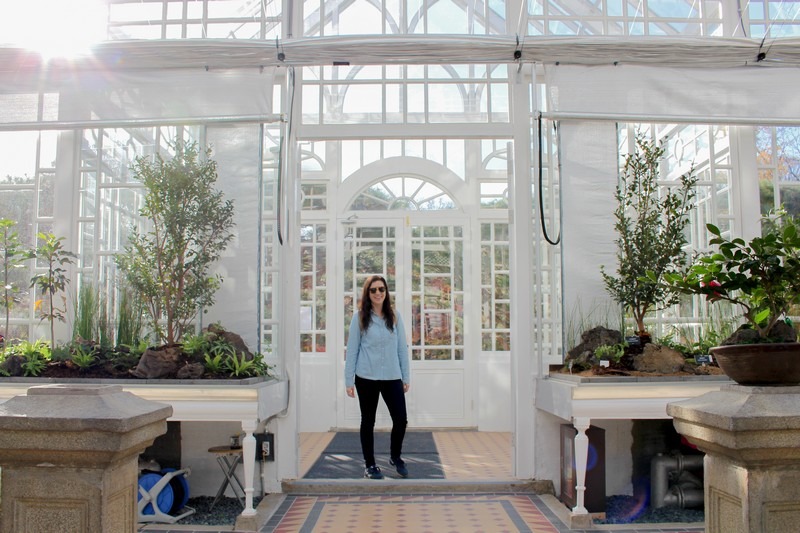
Did you like this post? Pin It!
